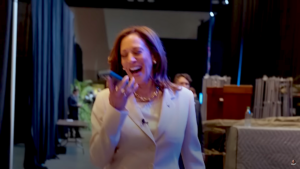
There are already signs that the new far-right Argentine president will promote serial electoral fraud, writes José Paulo Kupfer
Victorious in the election for the Presidency of Argentina, riding on a proposal to save the country with a “magic solution”, economist Javier Milei will be unable to deliver the radical and far-right program with which he won 55% of the votes in the 2nd round. There are no economic or institutional conditions for the adoption, for example, of “pure” dollarization, with the closure of the Central Bank, the main points of the economic program approved at the polls.
In addition to the lack of dollars to support dollarization, the measure, as well as Milei’s other radical proposals, will have to pass through the Argentine Congress. In both the Chamber and the Senate, the elected government will not have a majority to impose its program. Not even with the support of all those elected by the center-right coalition that finished in 3rd place in this year’s election, and which ended up splitting in the 2nd round.
Less bad because, from an economic point of view, the “pure” dollarization of the Argentine economy, at this moment, is unfeasible. The reason is quite simple: there are no dollars to support the circulation of a currency that is not issued by the country.
Given these insurmountable difficulties, it is fair to imagine that Milei, by staying at Casa Rosada, will promote serial fraud. If she maintains her histrionic style, it is likely that she will produce made-up and staged versions of the proposals that brought him to power, but far from the extremism of the electoral campaign.
One of the first movements in this direction is visible in the president-elect’s very physiognomy. Milei’s rebellious hair has already been tamed, the previously unruly strands are now well-behaved, although the exaggerated and tacky sideburns have not yet been eliminated.
The physiognomic change is, obviously, just a symbol of the abandonment of the most crazy ideas. Some of these proposals from the early days of the campaign — encouraging the sale of human organs and children, or allowing the father to reject paternity, in the early stages of a woman’s pregnancy — had already been swept away. It now remains to stop extremism in the economy.
Although his more moderate liberal program was rejected at the polls, there is a consensus that the center-right political alliance led by former president Mauricio Macri will play a crucial role in the new government. The expectation is that the former president’s membership will help provide technical and political support for the tough adjustments that will have to be made, and precisely, curb radicalism.
Dollarizing an economy in desperate hyperinflationary disarray is one of those “magic” solutions, which appear attached to populist candidates as the simple way out of a complex problem. As we know, such solutions are completely wrong.
Voters, in general, don’t understand very well how this works, but, faced with the lack of alternatives, they embark on the conversation of those who say they know how to get out of rock bottom. They have no idea that the script for dollarization, before being an efficient solution, is the plot for new crises, in the not too distant future.
Replacing the currency with the dollar or creating a currency that maintains parity with the North American currency, some countries have already tried to dollarize their economies to combat inflationary outbreaks. Argentina itself, if Milei manages to adopt some type of dollarization, will be a repeat offender in the adventure. They once reaped economic and social failure.
Argentines lived through the Cavallo Plan, from 1991 to 2002, during the 2 presidential terms of Peronist Carlos Menem. Designed by minister Domingo Cavallo, the monetary stabilization plan was based on the conversion of the local currency, the austral, into parity with the dollar. 10 years after the start of the experiment, once again in crisis, Argentina ended the dollar-convertible peso parity and returned to the old peso as its currency.
The Brazilian Real Plan was also a kind of dollarization soft. The conversion of the URV (Real Unit of Value), a virtual currency linked to the dollar, into real, on July 1, 1994, in the proportion of US$ 1 x R$ 1 per URV, with the value of 2,750 reais, the exact dollar exchange rate on June 30th. The real was born worth US$1 and, under the fixed exchange rate regime, it lasted 4 and a half years. In 1999, amid a crisis of shortage of dollar reserves, the exchange rate regime began to float.
The Brazilian economy faced several external debt crises and turned to the IMF (International Monetary Fund) more than once to rebuild reserves in dollars and honor debts in foreign currency. The country only stabilized again during the first Lula government, when it benefited from high international prices of commoditiesBrazil accumulated the robust volume of foreign exchange reserves that it maintains to this day.
The roadmap for an economy that adopts the dollar as its official currency is well known. It starts with an abrupt drop in inflation, it seems that it will be a success, but little by little, with the need to keep the exchange rate fixed and the interest rate high to attract dollars, the external debt tends to explode. Capital shrinks, the economy weakens, and, alongside low growth or recession, uncontrolled inflation slowly returns to the surface.
It is no coincidence that few countries venture into the “magic” solution of dollarization. Not considering the United States and its territories on other continents, there are less than a dozen and a half countries that adopt the dollar as their local currency. Among the Caribbean and Pacific islets, the highlights are Ecuador, Panama and Zimbabwe.
Even these last 3 are from relatively small countries and economies. Zimbabwe’s economy is equivalent to 1% of Brazil’s, while Panama’s barely reaches 2% of Brazil’s GDP, and Ecuador’s 5%. Like Zimbabwe, Ecuador does not have 20 million inhabitants, while Panama does not even have 5 million people. In all of them, the economy grows little, and in the case of Ecuador, income per capita Today, in corrected values, it is lower than in 2012.
Milei sold the rotten fish of dollarization to a larger and more complex country, with 48 million inhabitants and an economy of US$500 billion, in which there is a history of strong federalism, with reasonably autonomous provinces. And, to top it off, he sweetened the pill with the promise of closing the Central Bank.
With dollarization, in fact, the main mission of a Central Bank, which is to command monetary policy, using the tool of interest rates, loses its function. With the dollar as currency, this task is outsourced to the Fed (Federal Reserve, the North American Central Bank).
But even so, the function of regulating and supervising the banking system has to be performed by some institution. This is so true that, after creating the ECB (European Central Bank), the countries in the euro zone, which trade the same currency, kept their central banks in operation.
The dream of extreme liberalism, in which everyone can create their own currency and the best one wins, which Milei seems to embody, is nonsense. Even at a time when currencies, after having long lost physical backing, are becoming increasingly virtual.
Just as it promises to reduce 18 ministries to 8, possibly swelling those that remain with the functions (and teams) of those that were eliminated, it will have to create a department to control the financial system. Instead of the BC, for example, an IFG (Instituición Financiera General), or something like that.
Milei can end the Central Bank and even change the name of the currency in circulation, but he will not escape scenographic changes, false in essence, in many of his proposals.
Source: https://www.poder360.com.br/opiniao/versao-ultraliberal-de-milei-sera-cenografica/

